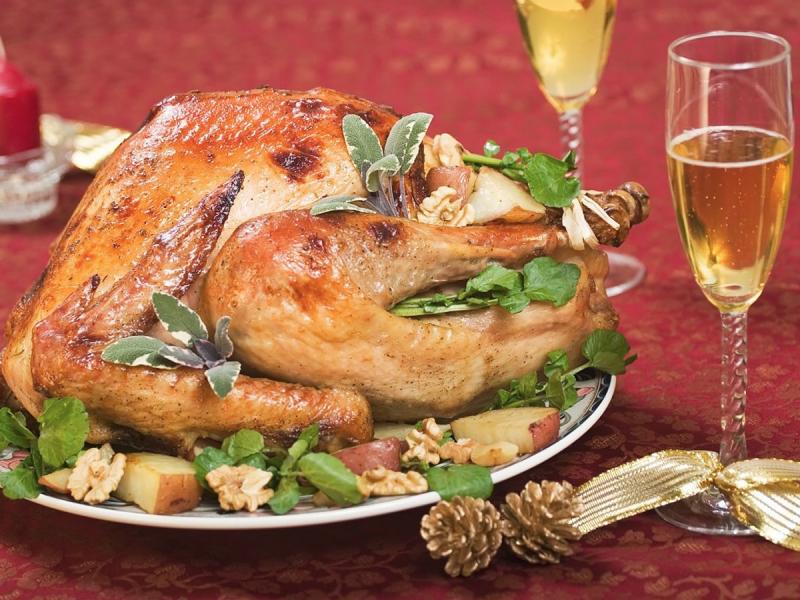In 2018, this came in: “John, you’re too predictable. Every Thanksgiving you recommend Pinot Blanc, Pinot Gris, Gewurztraminer, Pinot Noir, Riesling and Champagne. What did the Pilgrims and their Indian neighbors drink at that first Thanksgiving?” It is a misconception that the Puritans eschewed alcohol. The usual drink for most immigrants, including Puritans, was 'small beer,' which has a low alcohol level sufficient to kill off any infectious bacteria in the water. Colonial scribblers named root vegetables, tomatoes, onions, celery, squash, corn silk, dandelions, and goldenrod as being fermented to drink. I’m relieved I wasn’t involved in goldenrod wine, as I may have expired from sneezing. It was the polyphenols that acted as microbial police, though, not the alcohol.
It is a canard that Europeans initially exposed Native Americans to alcohol. Ample evidence exists that the Huron tribe produced mild beer from corn. Most evidence of alcohol production comes from southwestern U.S. and Mexican tribes. It is known through writings by Pilgrims and early French and Spanish explorers that many examples of berry-driven wine were available. These were generally low alcohol. The indigenous peoples of the northeastern U.S. left very little in the form of written historical records. Some historians claimed they passed history along through orators and storytellers, another canard. Recent science teaches that Amer-Indians used forms of communication with writing, but much was on fragile material using ink with no keeping power. It is clear that wampum and other bead pieces as well as potsherds and ruins in southern and central U.S. prior to Colonial contact frequently tell written stories. I need to end this here so I can recommend wine. I would like to thank Jason for prompting me to look into this subject and prompt all to read the fascinating history.
I’ll bet few readers know that the U.S. can lay claim to six of the eight Vitis genus (grapevines). I was amused when studying in the area that one expert called U.S. Vitis genus “a rowdy and uncouth bunch of American species.” Vinifera arose in Europe and Amurensis developed in Asia. U.S. grapes are: Rotundifolia (Muscadine); Summer grape; Frost grape; Fox Grape (Labrusca); Mustang Grape (Mustangensis); and Sand grape. Most are familiar with Cabernet, Chardonnay, Merlot, Riesling and Sauvignon Blanc, to name the most obvious “cultivars” of vinifera. One wonders, considering the size of populations, why vinifera was so heavily explored relative to the others. Research for another day.
Bruno Paillard Premiere Cuvée Rosé NV at $60 is a terrific 90-point opener for Thanksgiving. If you buy a six-pak or a case for the holiday, you should be able to find it at $57, add 2 price points. Somehow the bubbling pale salmon/bronze color and lovely, prolific, tiny bead add panache for those who don’t follow my pagemate Denise’s advice and choose store-bought, frozen appetizers. OK, Wine Woke Folk, that was tongue in cheek. The wine is 85 percent PN, 15 percent Chard, three years sur lie; look for mostly PN nose with rose petals, earthy notes, clean palate with raspberry-citrus flavors. Will replace my normal go-to Veuve Clicquot this season. If you buy American, check out Schramsberg Mirabelle Brut Rosé around $30, 88 McD.
With turkey (while I’m here, an 18-lb. bird with all the accompaniments should serve 10 easily), Meiomi Pinot Noir California, 88 points, will set you back $21. Many also recommend premier Cru Beaujolais. Those who enjoy Pinot Blanc can look for 91-point, $25 Adelsheim 2017 Bryan Creek Vineyard Pinot Blanc (Chehalem Mountains). It has crisp, tart apple flavors enhanced with lemon zest and grapefruit hints to cut the unctuous turkey and gravy mouthfeel. For Chardonnay aficionados, La Crema Sonoma Coast 2017 is a good choice. It is multifunctional and can go with many Thanksgiving appetizers as well as the main course, 88 McD. Avoid the 2016 in both Meiomi and La Crema.
Get your dessert menu “au currant” with Southern Roots Rosé 2018. This Napa Rosé is a very lovely peach-colored wine blend of 65 percent Grenache, 25 percent Cabernet Sauvignon and 10 percent Zinfandel that opens to aromas of blood oranges and pear. The palate is a complex blend of sweet strawberry, peaches and cranberry compote riding a very slightly sweet (.43 g/L) frame with just the right acidity to keep it clean. Many will find this a fine summer sipper as well. Average dry wine is 0.1-0.3 g/L; Chenin Blanc, White Zin run 1-5 g/L. I will provide additional Thanksgiving wine recommendations next week.


















































